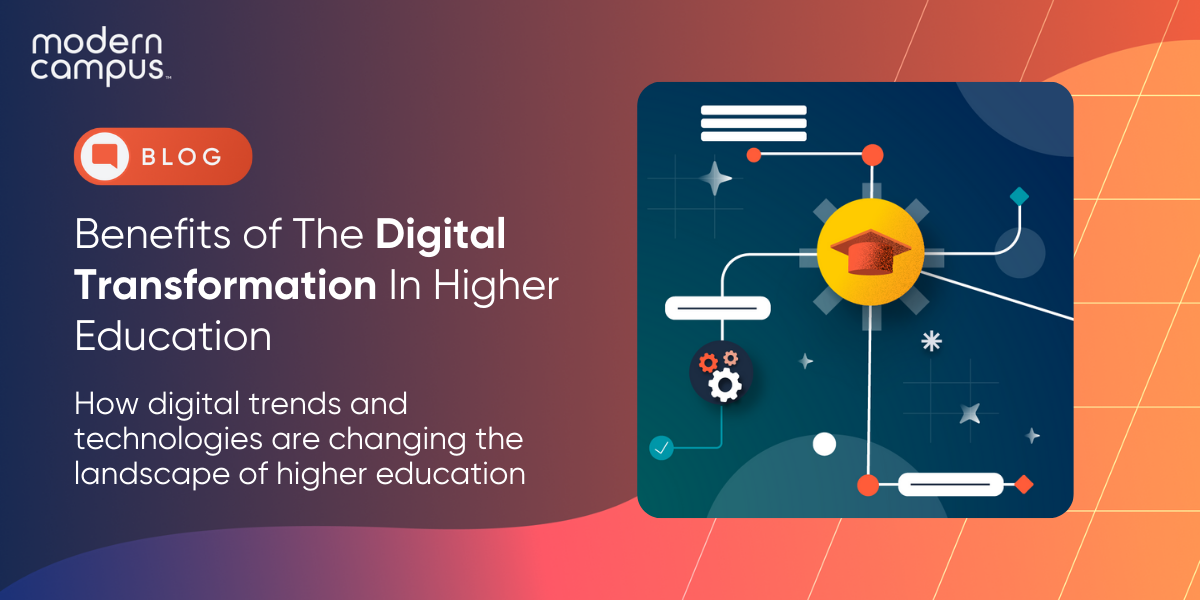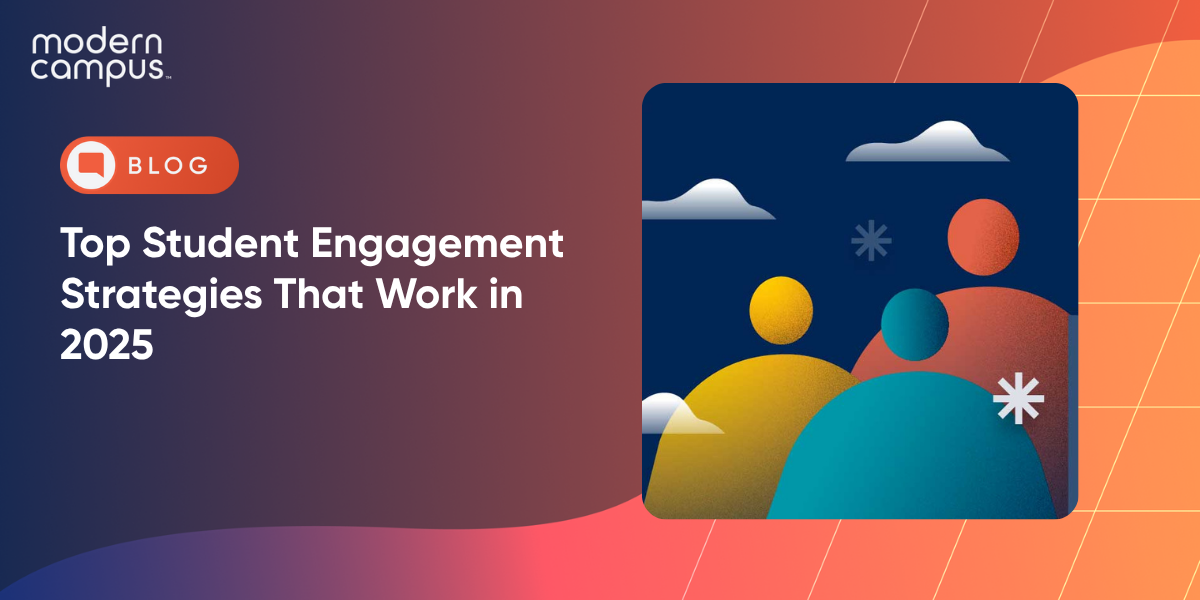Understanding Higher Education’s Digital Transformation
The digital landscape has fundamentally reshaped higher education, revolutionizing how students learn, faculty teach, and institutions operate.
Emerging technologies, along with students’ changing expectations about technology, are paving the way for more efficient, accessible, and personalized educational experiences.
Let's delve into the key advantages of this transformation, along with the top strategies for universities and colleges that wisely wish to embrace it.
Benefits of the digital transformation in higher education
- Student experience enhancement: Today’s learners no longer need to be on campus at set times or locations. Digital transformation enables personalized learning paths, interactive content, online support, and virtual classes—empowering students to learn at their own pace and on their terms.
By aligning support services with how students live and learn online, institutions can boost both usage and effectiveness, ensuring these services resonate more deeply and deliver greater value.
Access to educational resources
Students have unprecedented access to knowledge, with digital transformation removing geographic barriers and unlocking a wealth of research and collaboration tools. But with open access comes the risk of misinformation, making it essential for institutions to help students build media literacy, critical thinking, and fact-checking skills.
- Gamification: Gamifying student-facing platforms has made education more interactive and engaging through inspiring student involvement and enhancing the learning experience. Gamification is also boosting engagement in co-curricular activities; points, leaderboards, reward programs, and other elements are motivating more students to join organizations and attend campus events.
- Collaborative learning: Technology facilitates collaboration, allowing students to work on projects, share ideas and converse from wherever they are. This fosters community building, encourages critical thinking, and expands the college experience beyond the classroom for all students, staff, and faculty. Administrative automation: Streamlining through automation reduces time and resources spent on routine tasks, promoting collaboration across departments and increasing staff happiness. Automation also promotes more interaction between students and faculty, and work on strategic initiatives that boost the institution’s sustainability and longevity.
- Data analytics for decision-making: By providing institutions with valuable, real-time insights into student performance, engagement, and behavior, data analytics has revolutionized how colleges and universities use metrics to better understand students and make decisions that improve support services, classroom experiences, enrollment strategies, and more.
Digital transformation allows institutions to more easily track student participation via mobile swipe-in technology, garner information on website visitors through CRM systems or SIS, analyze engagement with institutional communication, better understand enrollment trends through visualization, and more.
Most importantly, emerging technologies make it possible for more administrators (beyond data and research specialists) to become data-informed decision-makers.
Strategies to embrace digital transformation in higher education
- Cultivating a digital culture: Fostering a digital culture is key to successful transformation. Institutions must cultivate a mindset that embraces change and encourages experimentation across faculty, staff, students, and partners. Cross-campus collaboration should be expected and incentivized, with leadership setting the tone and providing ongoing training to help everyone leverage digital tools effectively. Recognizing and celebrating innovation reinforces its value and sustains momentum.
Investing in infrastructure and resources
To make real change possible, institutions must invest in innovative solutions, such as upgrading existing infrastructures, implementing robust cybersecurity measures, and providing access to the latest digital tools and technologies.
Try software systems like e-learning platforms, co-curricular management hubs, personalized web content management systems (CMS), catalog and curriculum management tools, student communication technologies, and enrollment solutions purpose-built for non-traditional learners.
- Addressing the digital divide: There are still many American college students who often have unreliable internet access. Institutions must work to make internet access more widespread, along with increasing students’ digital literacy skills. Campus resources and community partnerships that provide students with free or reduced-cost internet, laptops, and tablets can help improve access. Digital literacy programs—including one-time events and ongoing workshops—promote skill development. Meanwhile, incorporating digital literacy into the curriculum can teach learners to evaluate online information, use digital tools for research and collaboration, and understand concepts like cybersecurity and data privacy.
- Safeguarding data privacy and security: When sensitive student and institutional data are at stake, institutions must implement robust cybersecurity measures and adhere to data protection regulations. Key steps include encrypting sensitive data, implementing controls to restrict access to authorized users, conducting regular security audits and assessments to identify and address vulnerabilities, and implementing data protection policies that outline best practices for handling and storing data securely.
Conclusion
Embracing the digital transformation in higher education requires a strategic approach that encompasses cultural change, infrastructure investment, addressing digital disparities, and safeguarding data privacy and security. By adopting these strategies, institutions can position themselves for success while providing a more inclusive and innovative learning environment to meet modern students’ demands.
Last updated: April 8, 2024




